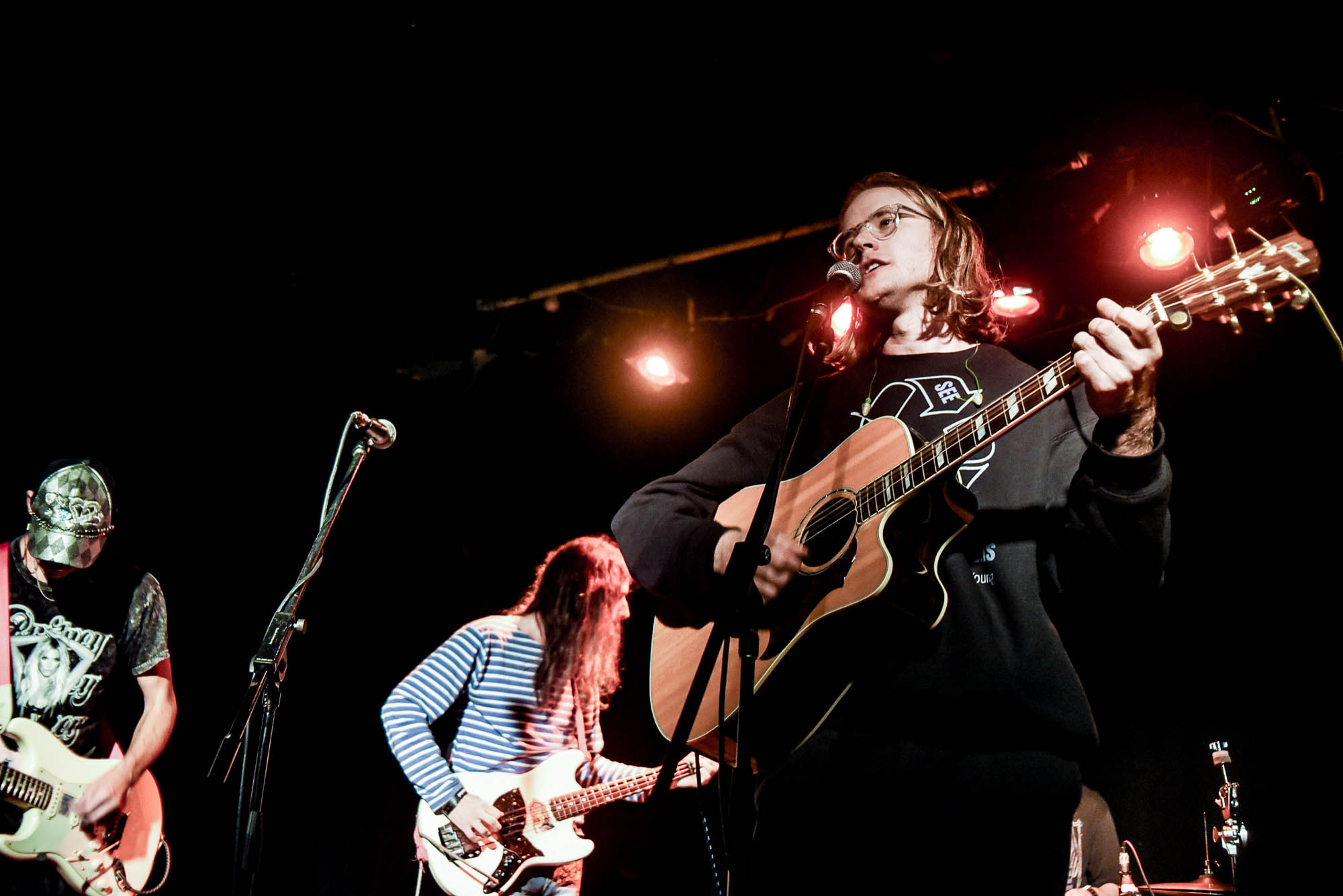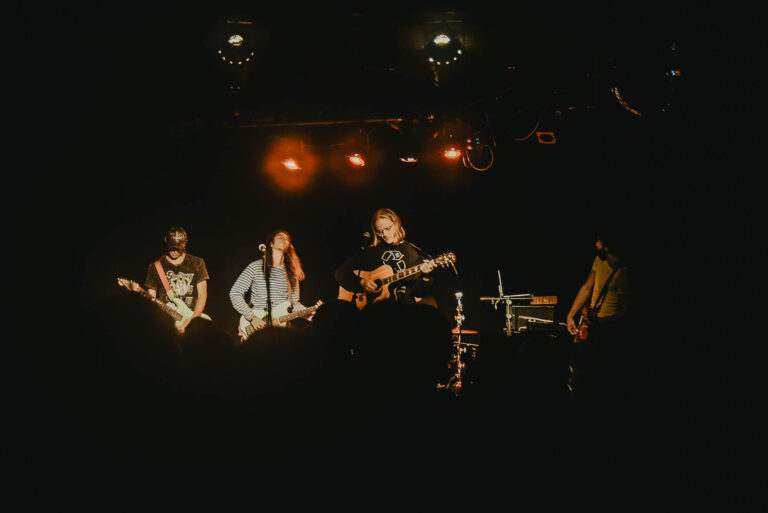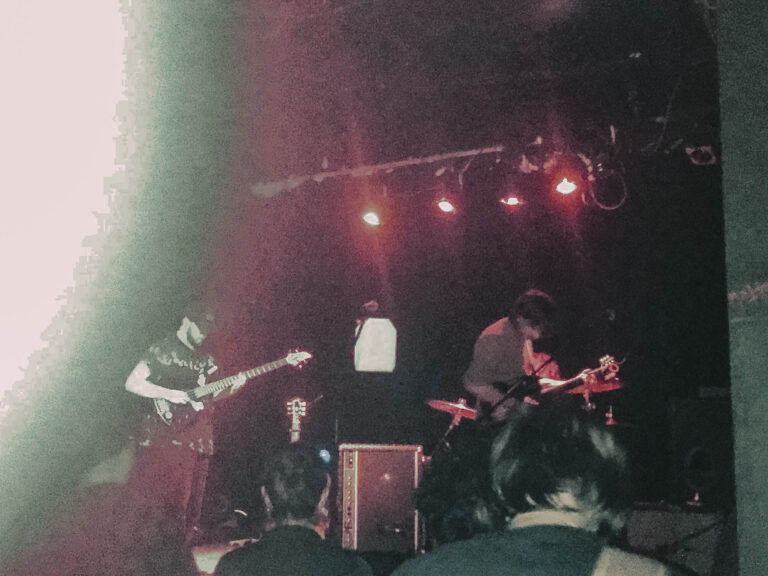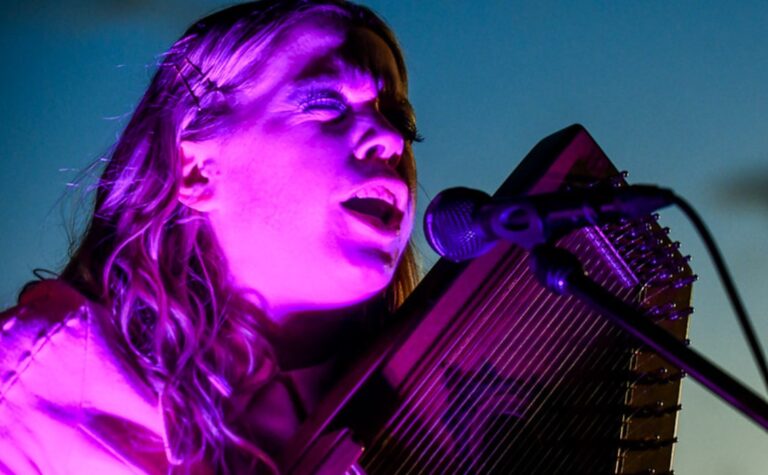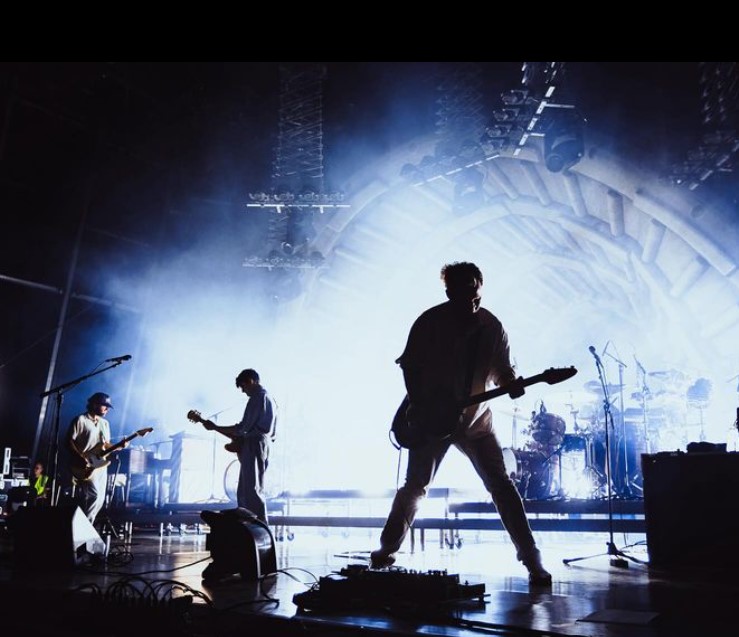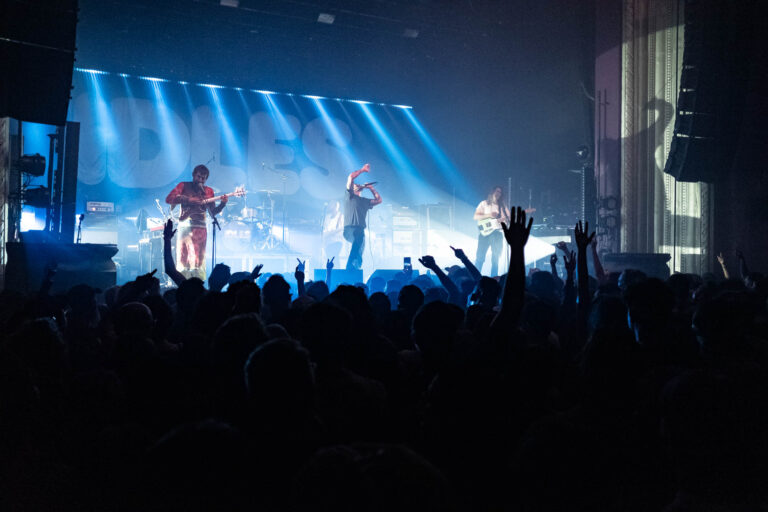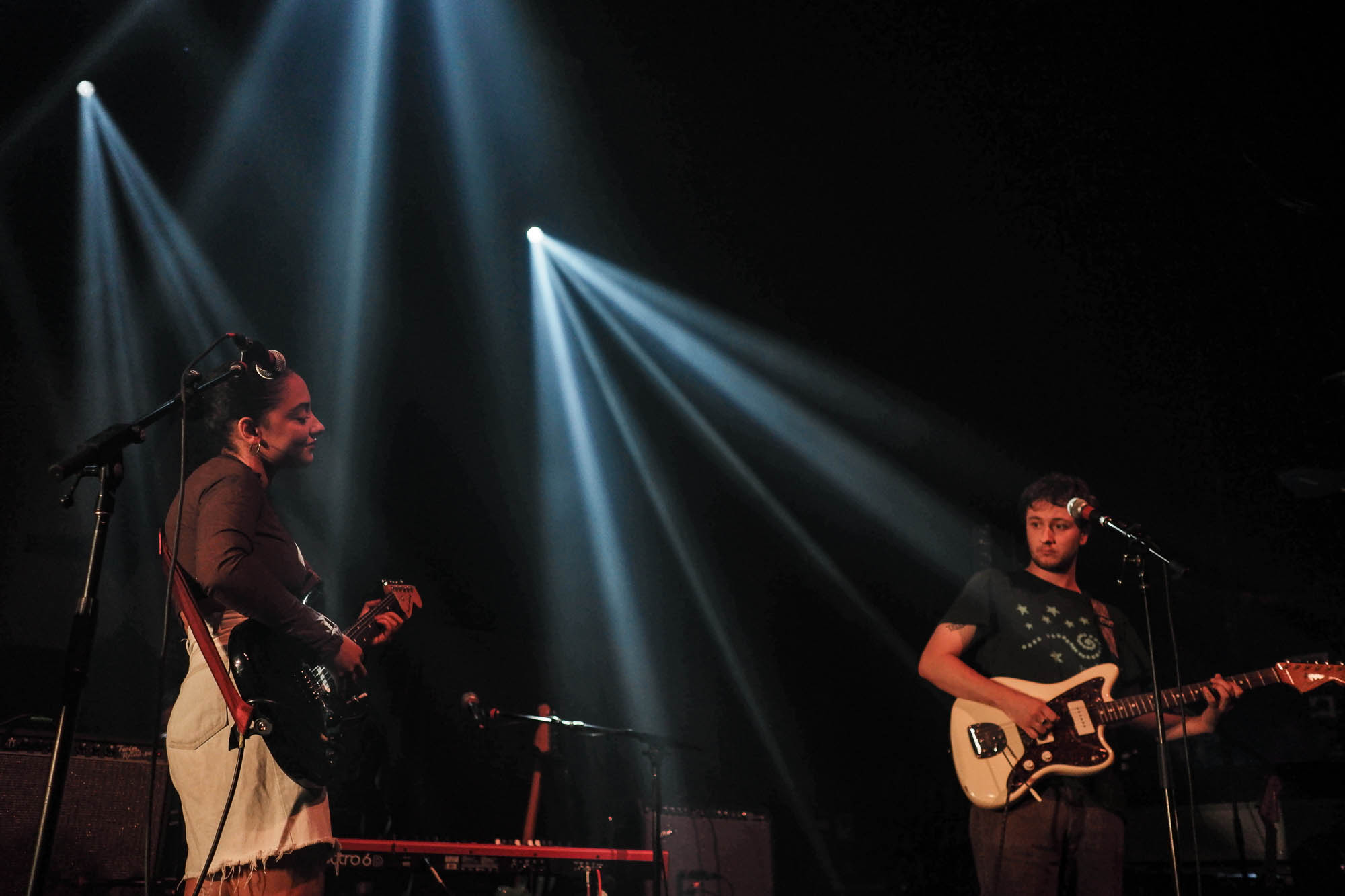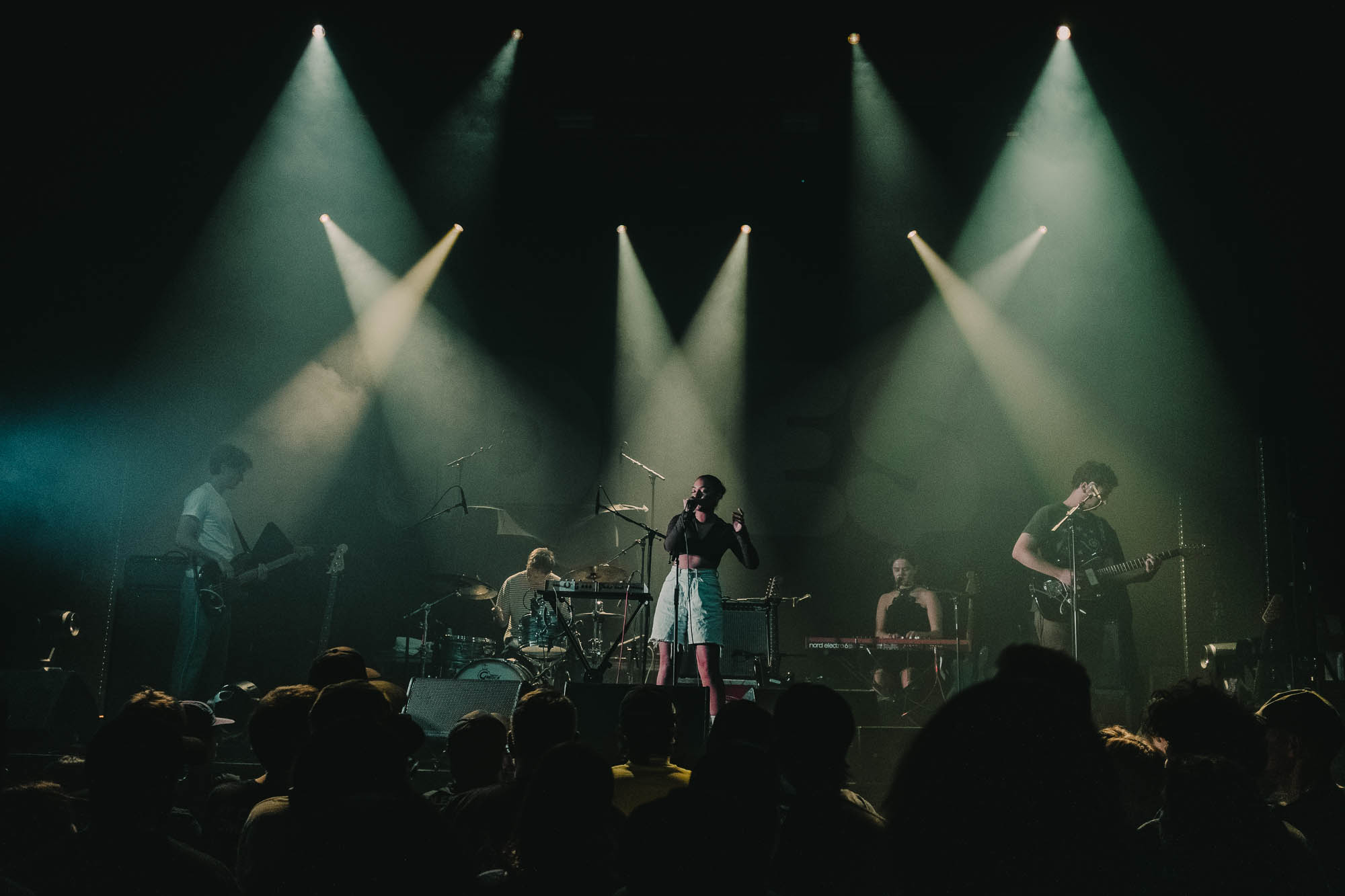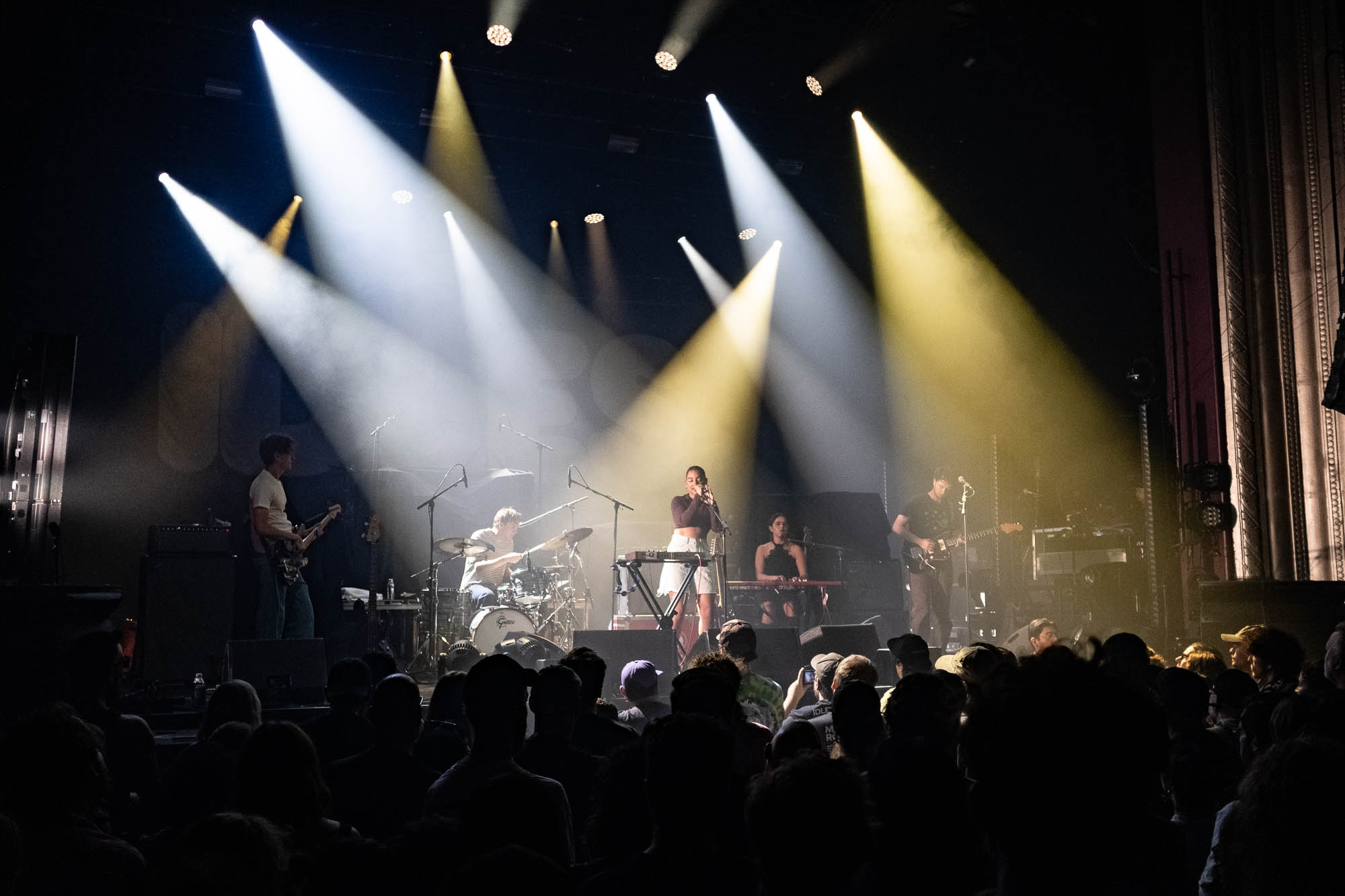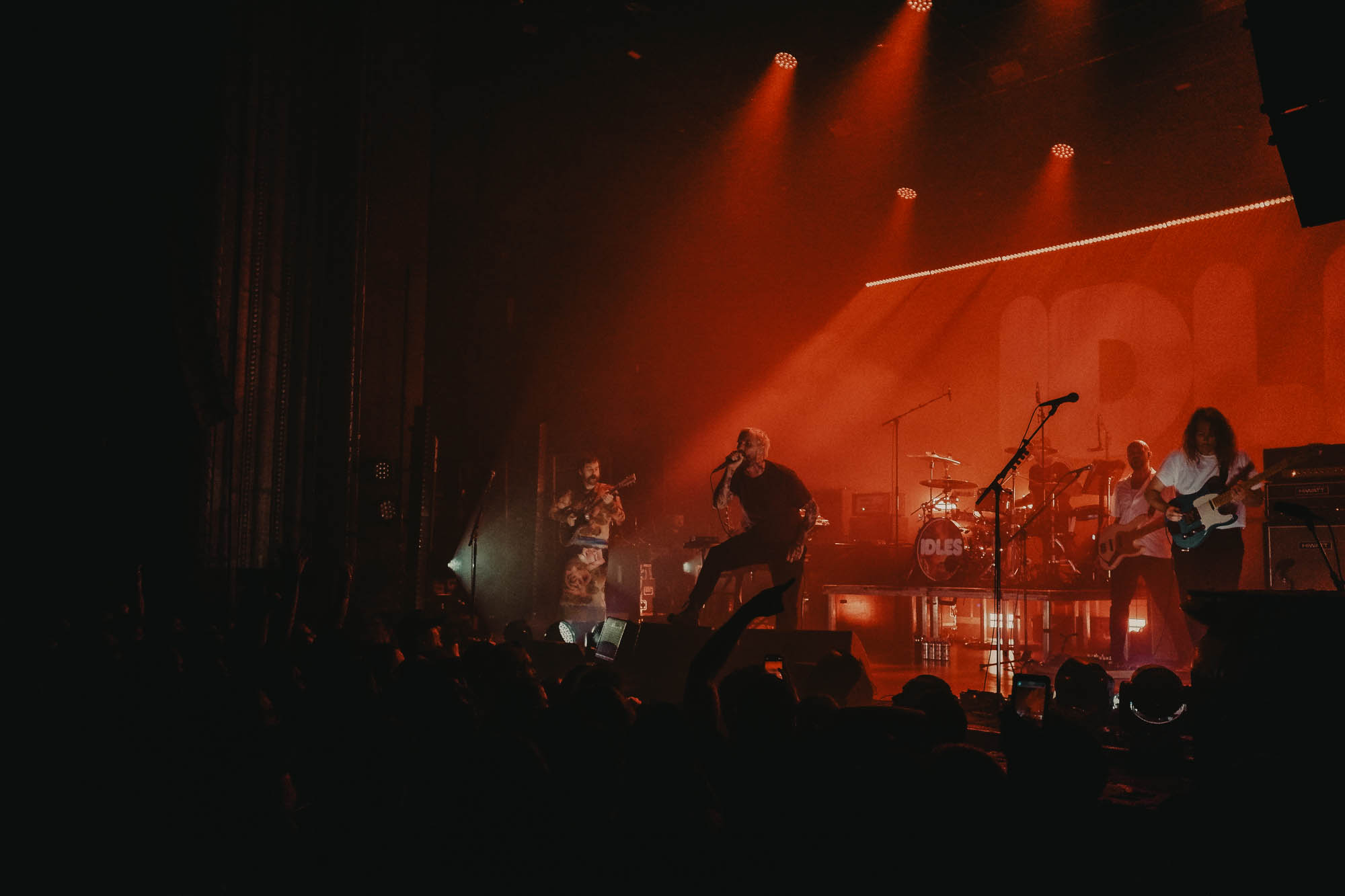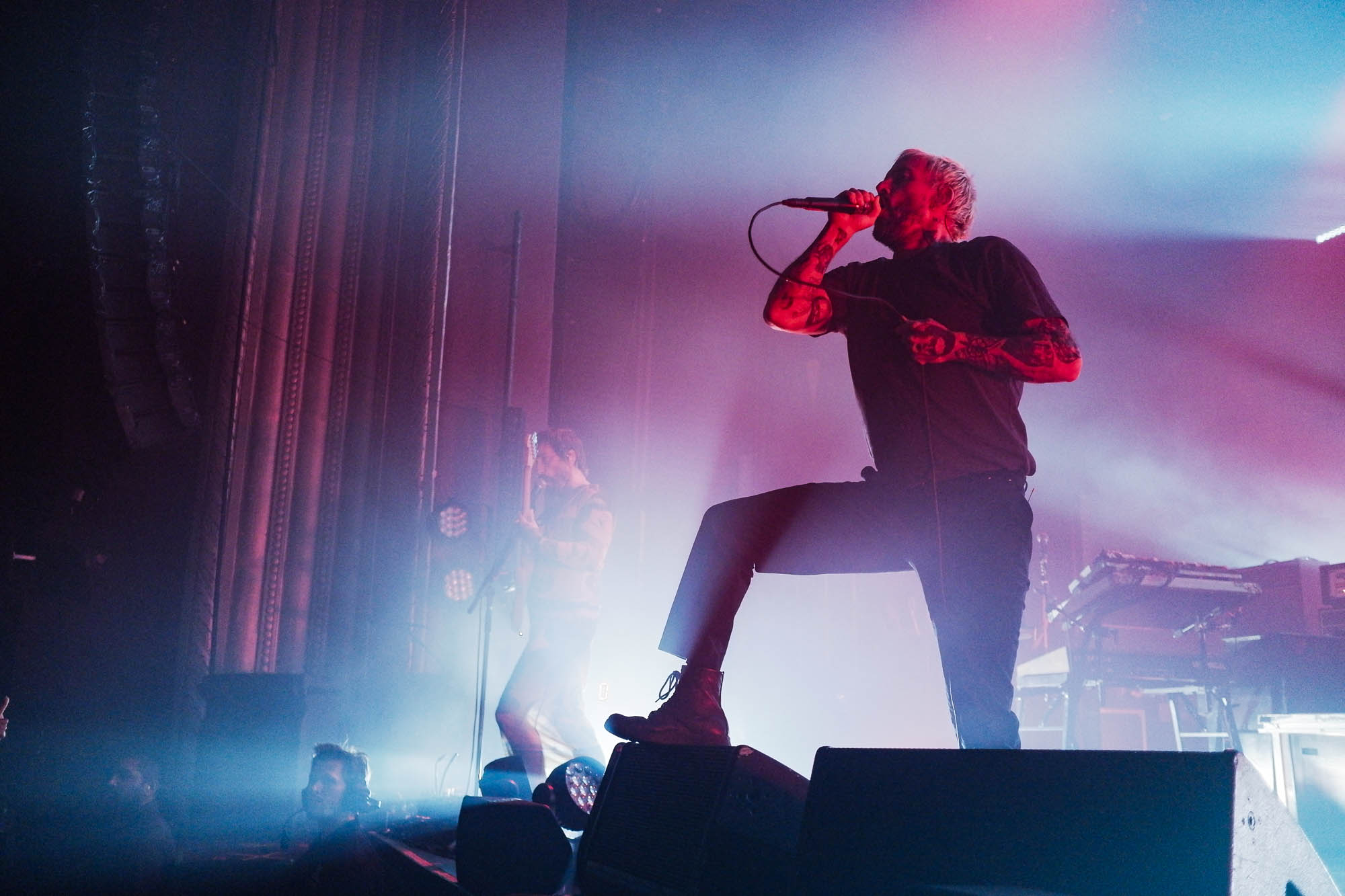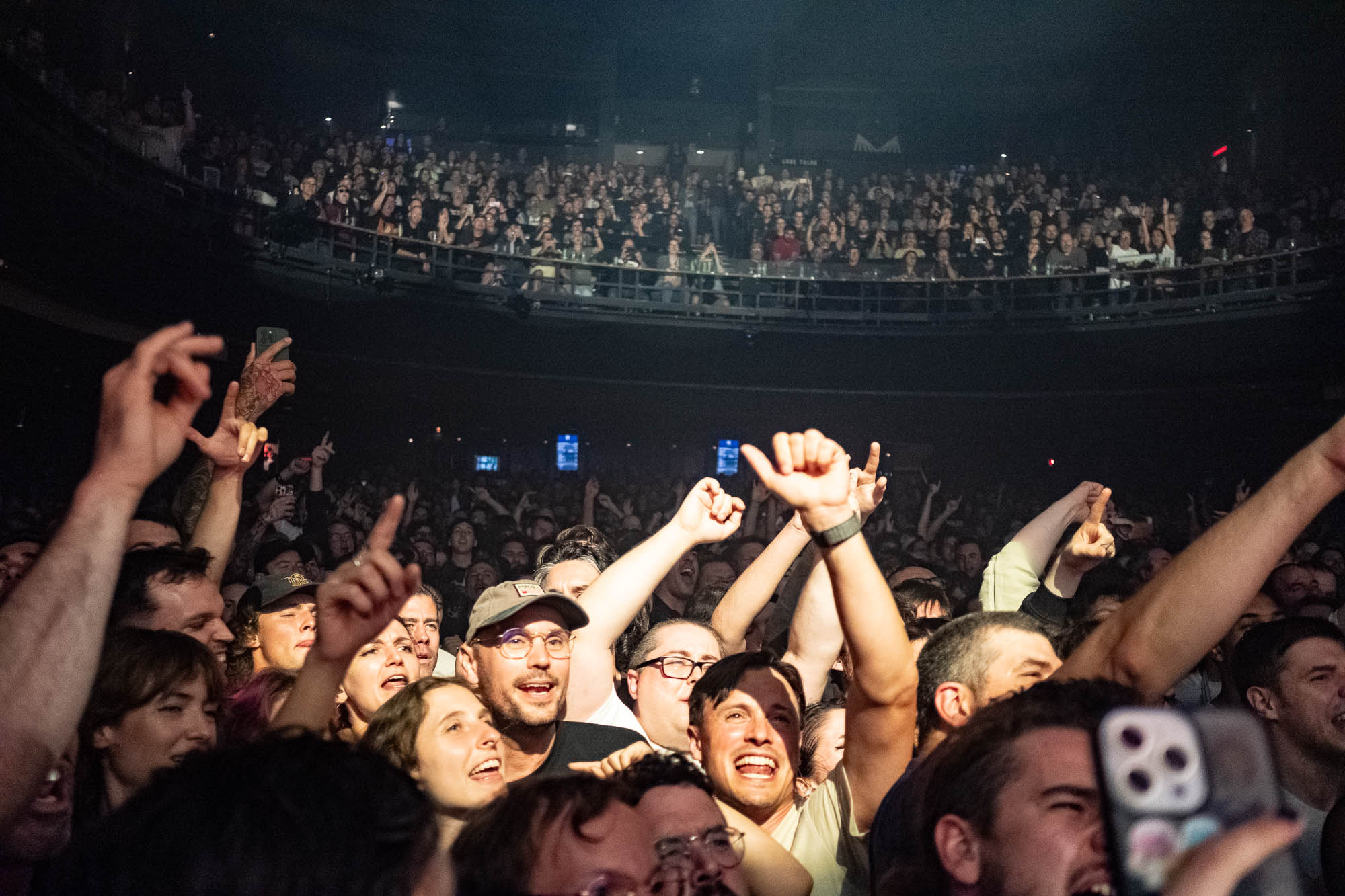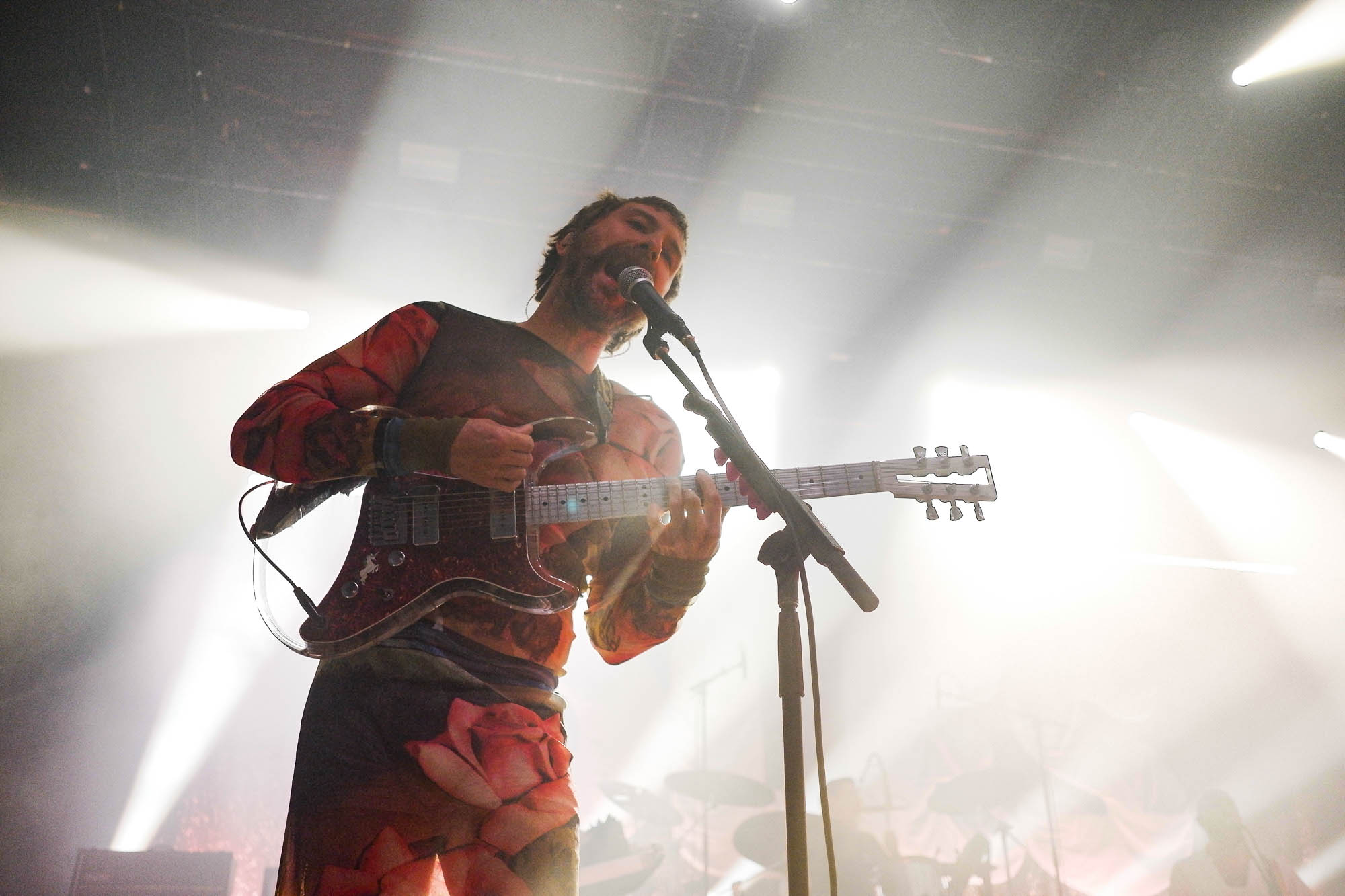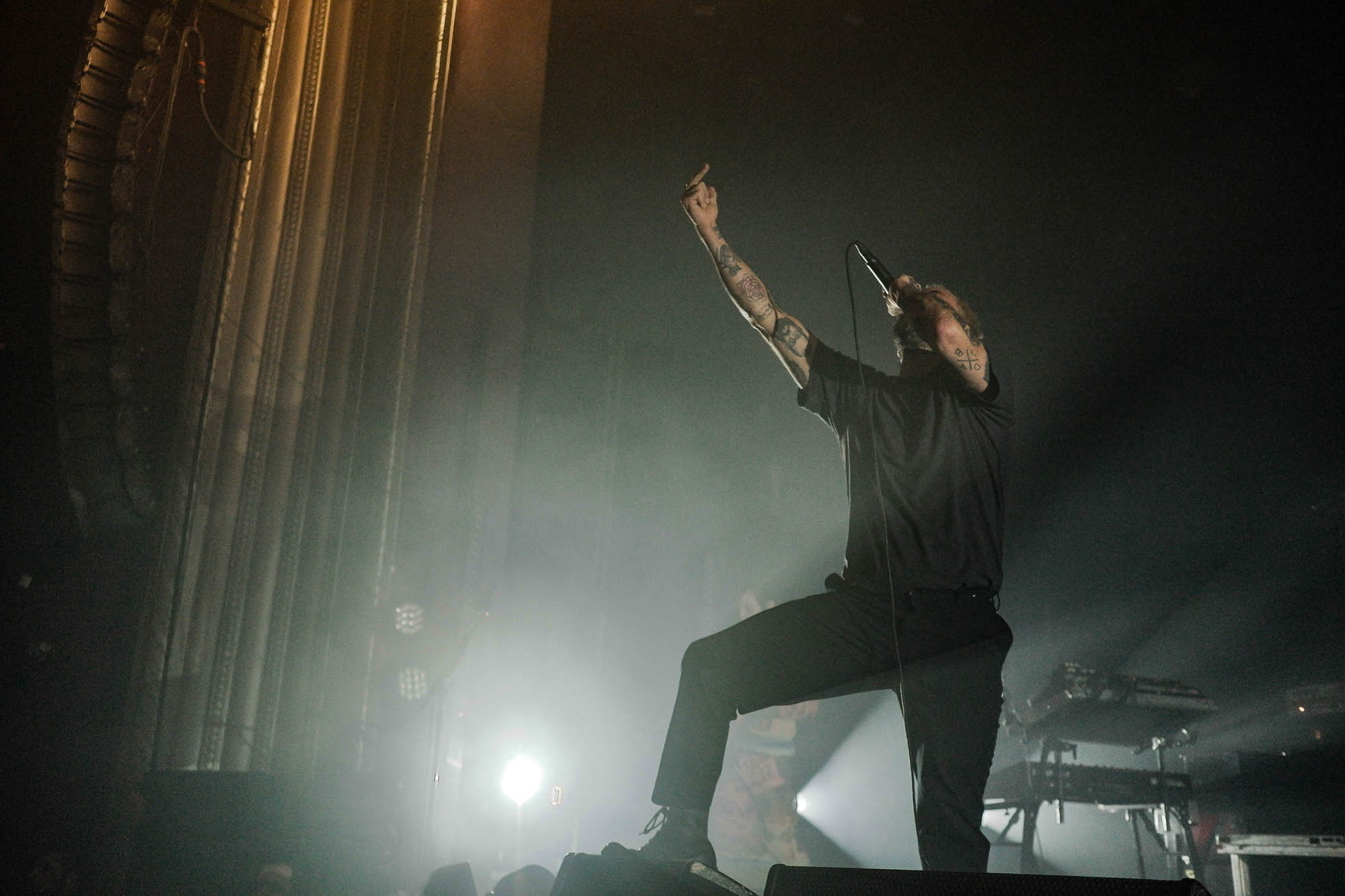Ezra Koenig and his band of vampires set foot on Quebec soil for the first time in five years this Wednesday, as the band presented their fantastic new album, Only God Was Above Us, to the Place Bell audience. For over two hours, Vampire Weekend drew perfectly on their different eras to demonstrate the immense musical palette they are capable of conceiving.
Four days after welcoming the legendary PJ Harvey, the Place Bell audience was once again spoiled by talented American alternative artists, namely the New York trio Vampire Weekend.
The set kicks off at around 8:20 p.m. in classic fashion, with “Campus, Boston (Ladies of Cambridge)” and “One (Blake’s Got a New Face)”, all from their 2007/2008 career. The trio stand in front of a curtain with the band’s name spelled out soberly in white on black, until… well, until the curtain falls on the climax of “Ice Cream Piano”, revealing four more musicians, a retro-futuristic backdrop and another set of spotlights. In the back of our minds, we had a sneaking suspicion that the performance wasn’t going to be quite so conventional throughout. An effect like this in concert is always a big yes.
Vampire Weekend presents hits from its first four albums(Vampire Weekend, Contra, the excellent Modern Vampires of the City and Father of the Bride), but naturally focuses on its latest offering, Only God Was Above Us, released just over five months ago. In all, nine of the opus’ 10 songs will be performed. Let’s talk about the album, by the way: after a slightly more “classic” pop turn with Father of the Bride in 2019, this year the Vampires treated themselves to a return to their roots with indie rock, baroque pop, shoegaze, Latin and Caribbean rhythms… name it. A jewel to be listened to in one go, and personally my album of the year.
Koenig is an excellent frontman, not the most expressive in his movements or attitude, but he does exactly what is asked of him in the case of Vampire Weekend: excel in all styles. Sentimental on “Unbearably White”, reflective on “Mary Boone” and powerful on “Capricorn”. To bring the full musical richness of the tracks to the stage, the musicians move from instrument to instrument, including Ezra Koenig, who takes a saxophone solo on the wacky “New Dorp. New York”. Multi-instrumentalists of the kind you see less and less these days. In my humble opinion, Vampire Weekend are certainly one of the most talented and innovative bands on the alternative scene since 2008, the year of their recording debut.
Between songs, the Vampire Weekend frontman addresses a 9-year-old fan of the band in the audience, who learns that this is her first concert, thanking her for coming. He also takes the opportunity to say hello to the people of Laval, but especially those of Montreal, knowing that Place Bell isn’t particularly full of North Shore residents (also knowing that they’re simply not in Montreal at the moment). It’s little touches like these that confirm that the band doesn’t go completely on autopilot during a tour.
After a two-hour concert, Vampire Weekend close the regular part of their show with “Hope”. One by one, the members leave the stage, until the band’s bassist, Chris Baio, plays the last notes, alone in front of the audience.
As a reminder, Vampire Weekend proposes an original and perilous exercise, to say the least: take any request for songs not written by Vampire Weekend. From “Don’t Look Back in Anger” to “Chop Suey!” not forgetting “So Long Marianne”, “Man! I Feel Like a Woman!” and “I’m Still Standing”. Each time, the interpretations are haphazard, with Koenig admitting every other song that half the band doesn’t know the chords. An amusing, good-will closing.
Until next time, dear Vampires.
PLACE BELL CONCERT SETLIST
1. Campus
2. Boston (Ladies of Cambridge)
3. One (Blake’s Got a New Face)
4. Ice Cream Piano
5. Classical
6. Connect
7. White Sky
8. Step
9. This Life
10. Sympathy
11. New Dorp. New York (SBTRKT cover)
12. The Surfer
13. Unbearably White
14. Oxford Comma
15. Capricorn
16. Gen-X Cops
17. Diane Young
18. Cousins
19. A-Punk
20. Prep-School Gangsters
21. Mary Boone
22. Obvious Bicycle
23. Harmony Hall
24. Hope
RAPPEL
1. Tempted (Squeeze cover)
2. Don’t Look Back in Anger (Oasis cover)
3. So Long Marianne (Leonard Cohen cover)
4. Here Comes Your Man (Pixies cover)
5. Chop Suey! (System of a Down cover)
6. How You Remind Me (Nickelback cover)
7. Dangerous Night (The Night Is a Knife cover)
8. The Boys Are Back in Town (Thin Lizzy cover)
9. Man! I Feel Like a Woman! (Shania Twain cover)
10. You’re Still the One (Shania Twain cover)
11. I’m Still Standing (Elton John cover)
12. This Must Be the Place (Naive Melody) (Talking Heads cover)
13. Walcott

